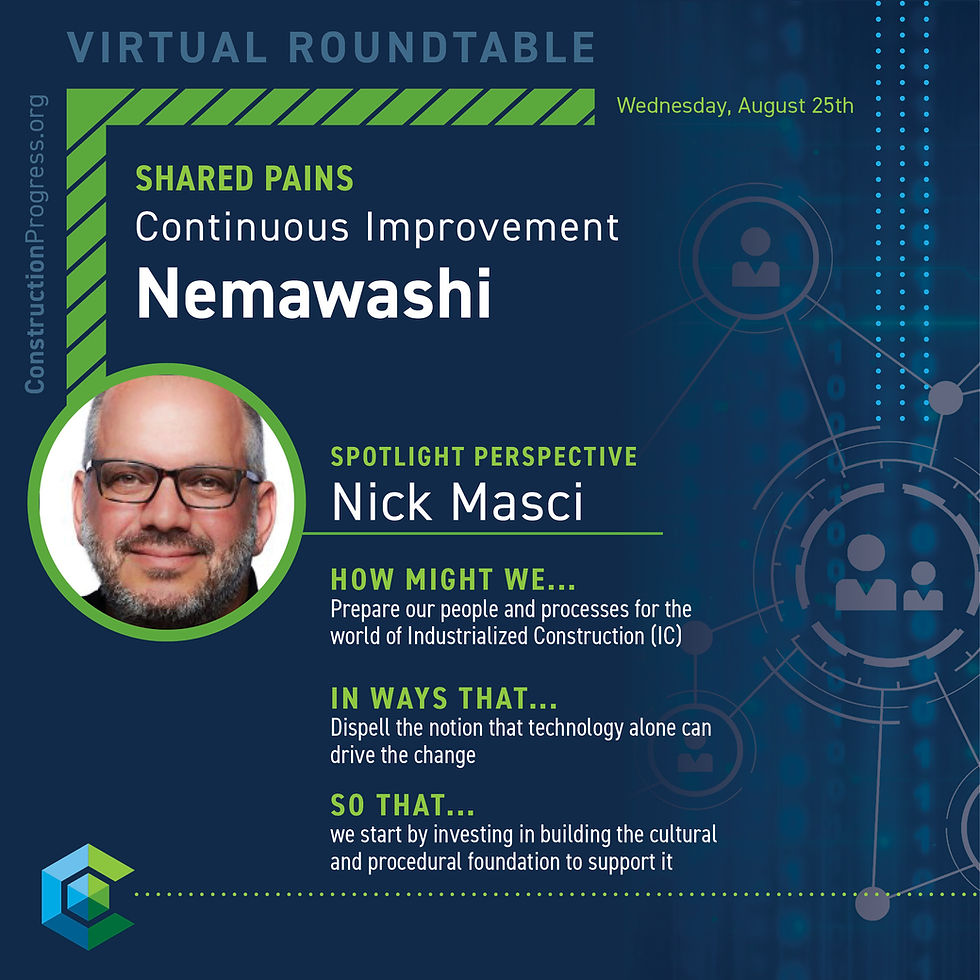Burnout in Construction: Identifying & Solving for This Serious Syndrome
- Chad Pearson

- Mar 29, 2021
- 4 min read
As we said at the top of our last roundtable discussion, burnout isn’t a buzzword. It’s a legitimate syndrome per the World Health Organization (WHO). And in the construction space, it’s a pressing issue.
That’s why we tapped two undeniable experts — Darcy Gruttadaro, Director for the Center for Workplace Mental Health at the American Psychiatric Foundation, and Brent Darnell, construction industry authority on emotional intelligence and owner of Brent Darnell International — to talk about this topic.
Brent laid out the scene: we put people on high-stress projects. We don’t encourage any healthy practices like eating right or sleeping enough, but we expect them to perform at a high level. “And they do perform at a high level, and they finish those projects,” he said. “But it comes at a great cost. We have the second-highest suicide rate of any industry. This is insane what we're doing to ourselves.”
Identifying burnout
I’ve found that the construction industry, in general, celebrates and supports a “tough-guy attitude.” We push and push without holding any space to admit if we’re feeling overburdened.
And, in fact, many construction workers are impressively tough. As Brent said, “Emotionally, you're able to handle that stress. But those symptoms of stress show up in your physical body. So we see things like being exhausted all the time, trouble sleeping, aches and pains, headaches, or any kind of autoimmune things that kick into stomach issues.”
With adrenaline pumping all the time, we slip into a state of perpetual stress at work. And that, Darcy said, is the exact definition of burnout: “a syndrome that results from chronic workplace stress that is not successfully managed.”
She underscored three dimensions of burnout:
Emotional exhaustion
Mental distance from your job (e.g., cynicism)
Ineffectiveness
So if the physical symptoms Brent mentioned or those three dimensions from Darcy sound familiar, you might be dealing with burnout.
What causes it in the first place? Darcy shared some national Gallup Poll results with us, highlighting the top five contributors to burnout:
Unfair treatment
Too much work
Lack of role clarity
Lack of communication and support from managers
Unreasonable time pressure
How to reduce burnout in your workplace
Ultimately, burnout creates burdens for the individual (stress, high blood pressure, sleep problems) and employer (missed days, turnover). Darcy put it succinctly. When you avoid burnout, “you're going to have higher productivity and performance.”
Employers hoping to steer clear of burnout can start taking steps now. As Brent said, “It's about meeting people where they are and doing simple things.” Get started by:
Prioritizing wellbeing. Have conversations among your leadership about your employee experience and how you can improve it. Darcy suggested things like flexibility during the workday or perks like Zoom happy hours or ice cream shipped to their door.
Opening up the conversation. Equip your managers to understand burnout and talk about it with their teams. Create psychologically safe spaces and look for people who are willing to be vulnerable. Once the conversation gets started, it’s easier for others to voice what they’re feeling.
Finding the sweet spot with stress. A controlled level of stress keeps employees engaged and drives productivity, but too much leads to burnout. Keep a finger on the stress pulse in your organization.
Do these things for lower turnover, fewer missed days, better performance, and better morale.
How to reduce burnout for yourself
If you think you might be dealing with burnout yourself, the roundtable gave two primary areas on which to focus: your nutrition and your overall life balance. Darcy said, “Balance is really important for your mental health. And when I say balance, I mean balancing everything, right?” She means your work, your social interactions, your daily routines — the whole shebang.
As a quick roundup, the other burnout management tips we explored were:
Look at your choices. If you’re eating junk and feeling bad, it might be a sign of burnout. If you’re having angry outbursts and you’re not usually angry, it could be burnout.
Get sleep. If that’s not easy for you, try these tips from the Mayo Clinic.
Get exercise. Even something as simple as a walk can make a big difference.
Eat healthily. Our roundtable participants discussed avoiding fast food and sugar and drinking plenty of water.
Talk to others. Don’t let your burnout simmer under the surface. Share what you’re feeling with others, especially your supervisor.
Do things that help you relax. Try exploring mindfulness and meditation or yoga. Or try this breathing technique that Brent mentioned, which is also used by Navy SEALS.
As Brent said, “People push and push and push. The adrenaline kicks in, and they just go until they collapse in some way. That's what we’ve got to stop. We’ve got to start having these discussions and checking in with each other.”
If you want to learn more so you can start the burnout-avoidance conversation within your organization, watch the full recording of this mental health roundtable.
On the next Virtual Roundtable General Session, Sasha Reed takes the helm to interview Maria Guy with GiANT Worldwide on her strategies to help company leaders develop more inclusive cultures. Register here.








Comments